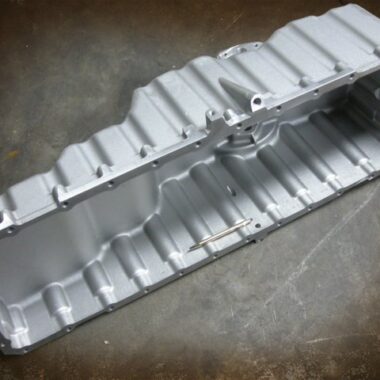Discovering the Craft: All About Aluminum Casting Techniques
Wiki Article
Crafting Excellence: Just How to Achieve High-Quality Aluminum Castings Every Single Time
In the realm of light weight aluminum spreading, the pursuit of excellence is a continuous trip that calls for a precise technique and an eager understanding of the complexities entailed. Achieving consistent top quality light weight aluminum spreadings demands an extensive understanding of the processes, from choosing the proper alloy to executing accurate mold and mildew styles and thoroughly regulating casting parameters.Understanding Light Weight Aluminum Casting Procedures
Light weight aluminum casting processes, necessary in the manufacturing industry, involve the elaborate change of molten aluminum into solid kinds through a series of thoroughly controlled steps. Recognizing these processes is critical to achieving premium light weight aluminum castings regularly - about aluminum casting. The main techniques utilized in aluminum spreading are die casting, sand spreading, and financial investment spreading
Each of these processes has its advantages and is selected based on variables like complexity, volume, and wanted finish of the light weight aluminum spreading. about aluminum casting. Comprehending the details of these techniques is crucial for producers aiming to produce high-grade aluminum castings consistently
Choosing the Right Aluminum Alloy
Selecting the suitable aluminum alloy is an essential decision in the manufacturing of top quality aluminum spreadings. When choosing a light weight aluminum alloy for casting, it is necessary to take into consideration the details demands of the application to make certain optimal efficiency.One of the most frequently made use of aluminum alloys for spreading is A356. This alloy uses outstanding castability, high stamina, and excellent corrosion resistance, making it appropriate for a large range of applications. 6061 light weight aluminum alloy is preferred for its superior weldability and good mechanical buildings. For applications needing high stamina, 7075 light weight aluminum alloy is a preferred selection because of its extraordinary strength-to-weight proportion.
In addition to mechanical buildings, considerations such as price, availability, and post-casting processes should also influence the choice of the ideal light weight aluminum alloy. By meticulously reviewing these variables, suppliers can guarantee the production of premium aluminum spreadings that fulfill the preferred specifications.
Executing Proper Mold And Mildew Style
Developing an effective mold and mildew style is crucial for guaranteeing the successful manufacturing of high-grade light weight aluminum spreadings. Correct mold and mildew design plays a significant duty in attaining the preferred attributes of the end product. To apply an effective mold go to these guys design, factors such as product flow, cooling rates, and component geometry need to be thoroughly considered.One trick aspect of mold style is making sure correct dental filling and solidification of the aluminum within the mold and mildew cavity. This entails creating runner and gating systems that facilitate smooth steel circulation and stop defects such as air entrapment or insufficient filling. In addition, integrating air conditioning channels into the mold style aids manage solidification prices and minimize the threat of porosity or shrinkage issues.

Controlling Casting Parameters

Making Sure Post-Casting High Quality Checks
To preserve the high quality of light weight aluminum castings, detailed post-casting high quality checks are vital. After the spreading procedure is finished, it is essential to guarantee that the last items fulfill the wanted specifications and requirements.Dimensional precision is one more essential facet that needs to be confirmed throughout post-casting high quality checks. Dimensions of crucial measurements and tolerances should be required to validate that the castings comply with the called for specs. In addition, mechanical homes such as firmness, tensile strength, and influence resistance might require to be examined with product testing to guarantee that the castings have the required strength and resilience for their intended application.
Conclusion
Finally, accomplishing top notch light weight aluminum castings requires a comprehensive understanding of the casting processes, selecting the ideal alloy, making mold and mildews efficiently, managing casting parameters diligently, and carrying out post-casting high quality checks faithfully. By adhering to these actions, producers can consistently generate aluminum castings that fulfill the highest possible requirements of quality and performance.Attaining constant premium aluminum spreadings demands a comprehensive understanding of the processes, from picking the suitable alloy to executing precise mold and mildew styles and meticulously regulating casting specifications. The primary approaches utilized in light weight aluminum casting are pass away spreading, sand spreading, and investment spreading.
Investment spreading, also recognized as precision casting, entails producing wax patterns that are coated in ceramic to form mold and mildews.Picking the suitable light weight aluminum alloy is a vital decision in the manufacturing of premium light weight aluminum castings.Making sure precise control over spreading parameters is necessary for maintaining consistency and high quality in light weight aluminum casting production.
Report this wiki page